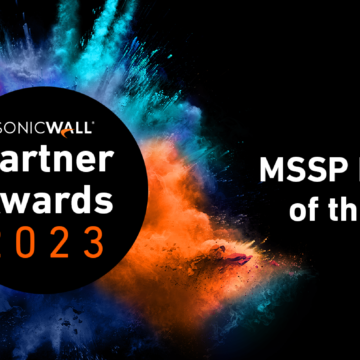MSSP vs EDR vs MDR: What Do They Mean And What Are The Differences

There are thousands of security products on the market and during your research, you may have come across terminology that ends up adding more confusion.
We’re here to help you navigate the cybersecurity terminology, so you can fully understand what your business needs to remain secure against cyber-attacks. In this blog, you will discover the concept of MSSP, EDR, and MDR and the differences between them.
Managed Security Service Provider (MSSP)
Before we get started with explaining MSSP, it will be beneficial to understand that these providers are separate from Managed Service Providers (MSPs). While an MSSPs primary focus is to provide a managed security service, such as MDR, to their customers, they may not offer any kind of IT support/maintenance. MSSPs may potentially assist their customers in reaching security standards and improving best practices, but this will be a secondary focus. Although, some MSSPs can include Security Information and Event Management (SIEM) and provide incident response service, however, it may not be guaranteed. This would definitely be a question to ask when researching.
Whereas an MSP can offer all kinds of IT Services, including support, Cloud integration, infrastructure changes, and more. If you’re lucky, you may find an MSP that offers a variety of solutions as well as a Security Operations Centre (SOC), thus, removing the pain and stress of having multiple third parties handling different areas of your IT.
Not to mention that an MSP will know your business and your IT systems extremely well, knowing what is best for specific business and budgetary needs. Also, they are able to remediate alerts and incidents rather than relying on internal IT teams or another party to remediate.
Managed Detection & Response (MDR)
A managed detection and response solution is an alternative managed option that primarily focuses on 24/7 monitoring, threat detection, and incident response. By utilising MDR, businesses can prevent a cyber threat from accessing the network, both reducing the risk and impact of a cyber-attack.
Remember, cybersecurity is forever evolving, therefore, it’s not a matter of “if”, but When”.
While MDR utilises its own technology platforms, typically integrating with existing security products and services. servers, cloud services such as Microsoft 365, AWS, Azure, endpoints, firewalls, and other security services.

If you are looking for a monitoring, detection & response service, it’s best to be very thorough in your research. While MSSP’ offers this as its focus product, some may not deliver the systems needed to properly detect security threats. For example, security incident & event monitoring would be most appropriate to have when trying to identify threats. It’s important to ask questions as to what products and services they will be used to carry out their detection and response service, so you don’t end up paying for overpriced legacy systems.
Endpoint Detection & Response (EDR)
An endpoint detection & response solution is a much more sophisticated endpoint security solution, focusing on detecting and providing a real-time response to identified threats. Unlike your traditional anti-virus software, one of the key differences is that EDR has a much larger scope and contains a variety of security tools to identify threats. Antivirus can be perceived as a part of the EDR system as one of the security tools.
EDR uses these tools to monitor, log and report on endpoint activities, including user, systems, and network activity. The reason it focuses on these areas is to identify threat patterns and learn how to respond to them, whether it be removing the threat or containing it. While EDR provides a deep understanding of endpoint activity, it will only monitor the computer it’s running on. Meaning it will not monitor the business network or IT infrastructure.
EDR can have a complicated structure, therefore, if not configured and monitored properly, your business may still be at risk of cyber-attack. In fact, a report by Gartner revealed in 2019 that and those using an endpoint detection and response solution may still suffer common advanced attacks due to a lack of knowledge. Including:
- Vulnerability exploits
- Spear phishing
- Watering hole attacks
- Man-in-the-middle attacks
- Buying access
This is why it’s incredibly important to ensure that your endpoint detection and response solution is configured correctly, and has the appropriate people monitoring it, in order to mitigate these advanced cyber threats.
AirIT Guardian
Organisations everywhere are struggling to efficiently detect and respond to modern cyber threats and their IT departments have deployed a handful of security tools in an attempt to address this issue. However, the lack of 24×7 coverage, extensive security operations expertise, and a specialist security team means that threats may go unnoticed and linger in the environment for months.
Therefore, we have worked hard to research and implement advanced cyber security measures that will help significantly reduce risk and downtime in your organisation caused by cyber threats.
We offer a proactive suite of next-generation cyber security services, called AirIT Guardian. AirIT Guardian can offer the following:
- Managed Detection & Response (MDR)
- Threat & Vulnerability Management (TVM)
- Cloud Security Posture Management (CPM)
- Advanced Endpoint & Server Protection


